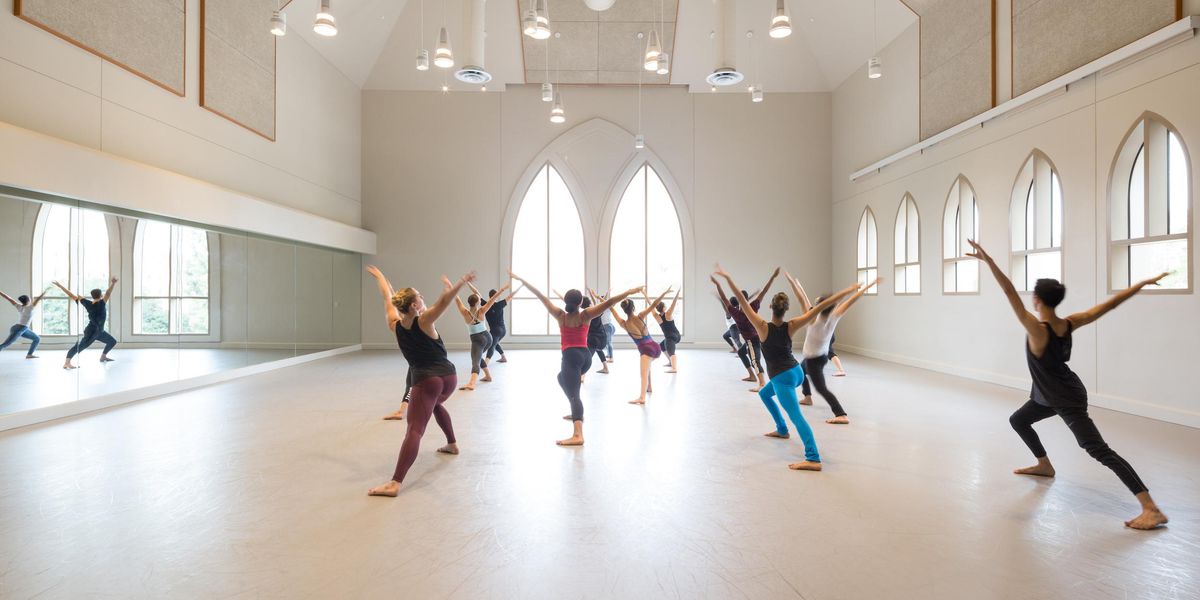Black Label Movement
Cowles Center for the Performing Arts
Minneapolis, Minnesota
June 28, 2013
Patrick Jeffrey (foreground left), Zack Teska (foreground right), Elly Hollenhorst (background most left) and Cheng Xiong (background center). Photo: Bill Cameron, Courtesy BLM
Carl Flink’s dances often manifest a Brutalist architecture—rugged and direct with blunt physicality and provocative themes complexly layered. His Whack-A-Mole, a new large-scale work for 17 dancers (or “movers” as Flink calls them) to an original soundscape by Greg Brosofske, references the military term for clearing an area of insurgency forces. Flink expands its meaning to explore the cycle of destruction and recovery a community experiences over long periods of endemic strife.
The work’s stark expressionism brings to mind a sort of guerilla version of the classic depiction of war in Kurt Jooss’ The Green Table. Flink’s ability to handle group dynamics clicks in immediately. The Black Label dancers (almost all of them the youthful age of our combat troops) sit on rows of boxes executing a litany of gestures that meshes army signals, skewered salutes, Catholic crossing motions, fingers thrust under chins as if firing a gun. They constantly change positions, scuttling on all fours between boxes or migrating downstage to execute boot camp calisthenics. Brosofske’s grinding industrial and explosive sounds enhance the sense of bottled-up tensions. Throughout the piece there are allusions to PTSD, torture, suicide.
Patrick Jeffrey and Lauren Baker. Photo:
Bill Cameron, Courtesy BLM
Successive scenes wring variations on a vocabulary that merges risky gymnastic moves with the fluid lyricism of Humphrey/Limón. Dancers catapult through space, crash, roll, hoist one another in constantly shifting groupings that overlap like moiré patterns. A gentler Emilie Plauché Flink represents an ambiguous figure that is part consoling spirit, part angel of death. The ongoing reconfiguration of boxes—propelled across the stage like convoys or arranged into formations—render the stage space elastic. A large wire mesh fabric reminiscent of a military net hangs center stage, reflecting light and holding projections.
Jose Victor Bueno (left), Lauren Baker (center), and Zack Teska (right). Photo: Bill Cameron, Courtesy BLM
Most successfully, Flink evokes the unsettling and ambiguous nature of war by intermixing battle maneuvers with motifs of mourning, succor, even celebration. In one section, the group breaks into a shimmying Middle Eastern style dance that becomes a wild free for all—a bunch of kids relieving tension, letting go. To altered vocal samplings of Balkan and Swahili folk songs, this community rocks on, even as corpses fall out and hit the dust and two men toss a woman between them in what could be either playful camaraderie or violent assault. It’s the rigor of Flink’s inspired formalism and the commitment of his dancers that keeps this world from blowing apart. They deserve medals for outstanding service, every one of them.




